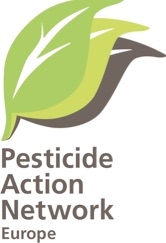Commission’s second legal act on the draft EDC (Endocrine Disrupting Chemicals) criteria proposal discussed on 18th of November Standing Committee on Plans, Animals, Food and Feed (SCoPAFF), section phytopharmaceuticals.
Background: On the 15th of June 2016, two and a half years past its deadline, the Health Directory (DG SANTE) of the European Commission (COM) published two draft legal acts -one under the Pesticides Regulation 1107/2009 and one under the Biocides Regulation 528/2012- which set the criteria to identify Endocrine Disrupting Chemicals (EDCs). These criteria must be horizontal and applied in other European Regulations on Chemicals (e.g. Cosmetics, REACH, Medical Devices, Water Framework Directive). The draft legal act has been strongly criticised by Member States, Scientists, Stakeholders and Members of the Parliament. This is because the criteria reveal great scientific inconsistencies and fail to comply with the EU law but also because the COM went beyond its mandate and removed the “cut-off” element from the pesticides criteria, by introducing a derogation to permit the use of such chemicals in the field. The “cut-off” criteria for hazardous substances (mutagenic, carcinogenic, toxic to reproduction and EDCs) in PPP Regulation, was set to refuse their admission for assessment. This decision was a mutual agreement among European Parliament, Council and the Commission and therefore, COM does not have the power to change the rules by its own. After all, the Regulation aims to provide a high level of protection for humans, animals and the environment.
Following the criticism, the COM revised the legal act and presented a second draft of the criteria proposal which was discussed in the Standing Committee (SCoPAFF/section phytopharmaceuticals) on 18th of November.
Overall opinion: Although there have been some improvements in comparison with the previous draft, the changes can be characterised as “cosmetic” in the sense that the burden of proof is still too high to identify a chemical as an EDC and the “cut-off” element to remove EDC pesticides from use is still not respected. Furthermore, the text as it is, leaves room for legal misinterpretation that will be easily misused by the chemical industry, and its lawyers, to allow the use of hazardous chemicals in the field. As a result, the European law will fail to protect humans (especially our most vulnerable, newborn babies and babies in the womb), animals, the environment and its ecosystems from exposure to EDCs.
Key points:
Below we provide our criticism on key points of the current draft criteria proposal annex (attached) :
3.6.5.2
-The COM went beyond its mandate and changed the current text from “negligible exposure” (i.e. closed systems or conditions excluding contact with humans, residue levels below the default value of 0.01 mg/kg), which also appears in the case of carcinogens and mutagens, to “negligible risk” [in particular when the product is used in closed systems or conditions that aim at excluding contact with humans, and respect the Maximum Residues Limits (MRLs)]. This change in the text is major as it contradicts the aim of the cut-off criteria to fasten up the authorization process and skip the risk assessment procedure for certain hazardous pesticides. With this element, the COM gives the green light for applicants to carry out a risk assessment (the definition of negligible risk is vague in the new text) and show that such pesticides can still be used in the field as long as exposure levels are below the 'no observed adverse effects level' (NOAEL- substantially higher than ‘negligible’ exposure!). Further, the food residues are to be compared with MRLs, as with every other pesticide that is authorised for use. This can be 100 or 1000 times more than the previously agreed default value. Here we need to highlight that there is no scientific consensus that exposure to EDCs during pregnancy or early development can be considered safe. The proposal will leave our most vulnerable unprotected. The COM should leave the text as it was, “negligible exposure”, which means exposure to the chemical is so low that cannot be measured or detected and therefore its risk is absolute ZERO.
-Ironically the same text (negligible exposure) was changed for non-target organisms as well (3.8.2.2.) but in this case “negligible risk” is not explained at all. As with the previous point, the COM should leave the text as it was: “negligible exposure”.
3.6.5.2.2 (also applicable for 3.8.2.2.)
(1) “it shows an adverse effect” should be “causes or is presumed to cause an adverse effect” (in line with WHO).
(2) delete: “it has an endocrine mode of action” and leave “it alters the function(s) of the endocrine system”. According to WHO, an endocrine disruptor “alters the function of the endocrine system”, which is different than an endocrine mode of action.
(3) this point “the adverse effect is a consequence of the endocrine mode of action” should be deleted completely or at least changed substantially to remove the certain link between mode of action and adverse effect (change to e.g. it is plausible that adverse effects are endocrine mediated). We are still investigating the endocrine mode of action that leads to the adverse effects of very known endocrine disruptors, like PCBs and tributyltin (TBT, used as biocides in boat paints). It is absurd to ask a certain link between endocrine mode of action and the observed adverse effect.
3.6.5.2.3.
(1b) In this point it has to be clear that all scientific literature (academic) will be taken into account, not just the studies that have used the tests (or similar) listed in the data requirements of PPPR, which in fact are the international agreed protocols (OECD guidelines- point 1a). In fact, most of the information we have on endocrine disruption at the moment comes from academic literature from tests that are not yet internationally agreed study protocols and may take decades to reach a mutual agreement.
